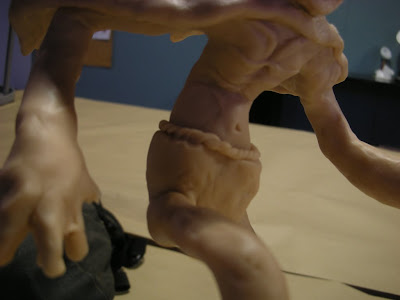 Doesn't this look familiar? Our drawings got displayed again!!
Doesn't this look familiar? Our drawings got displayed again!! Another Master Copy that we did during class assignment. This time round we have to work on line quality and using hatching to achieve light and dark. This study is done on Michaelangelo's work where the process of drawing a human figure is created through sculpting the proportions rather than developing the lines from basic.
Another Master Copy that we did during class assignment. This time round we have to work on line quality and using hatching to achieve light and dark. This study is done on Michaelangelo's work where the process of drawing a human figure is created through sculpting the proportions rather than developing the lines from basic. Our Hobbies and how we learn: Here's a couple of stuff that we ordered recently. All of them are excellent works by very good artists. Highly recommend these 5 books!! We normally read a range of books from indie works to pop stuff. Amulet as seen in the middle is currently in its 3rd volume. We've been chasing Kazu Kibushi for 8 years now. During his first year where he was doing web comic on his website BOLTCITY in flash instead of html, we started joining comic competitions. We've traded emails during those first 2 years but we changed our email accounts and went into army. Since then, we've been watching from afar and his now really way ahead in terms of skills, story telling, awards, professionalism than we are. It alway gives us mix feelings as we started on the same page as him but years later, we're so far behind. There's a whole list of rant we can go on regarding this and also the books that we're reading in terms of art styles, story narration, timing and pacing but we'll really like to leave that to your exploration while we go work on our skills. Till the next time, we wish everyone a Happy Halloween.



















 The facial feature is created by adding layers of Sculpey onto it. It gives us more control over the model.
The facial feature is created by adding layers of Sculpey onto it. It gives us more control over the model.









 In this project, Acrylic is used to paint over the Sculpey. The good thing about using Acrylic is the fact that when it is dried up, it holds on very well to the model.
In this project, Acrylic is used to paint over the Sculpey. The good thing about using Acrylic is the fact that when it is dried up, it holds on very well to the model.




















